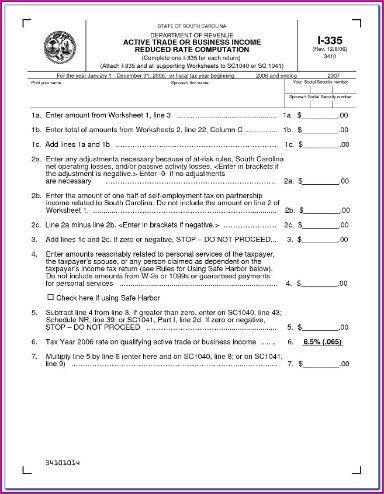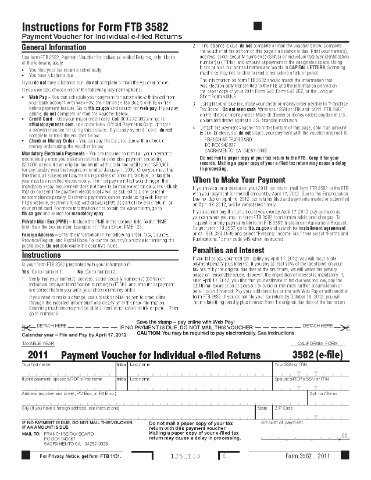Contents:
- Comparison of retail & wholesale prices, margins & gross margin (Table
- Remove products that don’t sell well
- Gross Profit Margin vs. Contribution Margin
- How do you calculate sales margins?
- How to calculate profit margin: Calculator, formulas, and examples
- Apple (AAPL) Gross Profit: Income Statement Example


For example, return on assets analyzes how well a company deploys its assets to generate a profit after factoring in expenses. A company’s return on equity determines a company’s return on shareholder equity, meaning its assets minus its debts. While gross margin focuses on revenue and COGS, the net profit margin takes all of a business’s expenses into account. Gross margin measures a company’s gross profit compared to its revenues as a percentage. For example, let’s say your company had $100,000 in sales last year, and your COGS was $60,000. To get your margin dollar amount, you would multiply 40% by $100,000 for a total of $40,000.

Once you have a system to calculate your cost of goods sold , you can use your cost to calculate your price. For the last 12 months, the gross margin for technology has fluctuated between50% and 56%. The current quarter’s margin is most likely the result of economic and health factors rather than a genuine improvement in efficiencies. In other words, the dramatic increase to 95% is the result of external factors that have driven up technology sales.
This concept is fundamental to management, cost accountants, and investors because it allows them to forecast future activities and create budgets. We’ll start by listing out the revenue and cost of goods sold assumptions for each company. The break-even point is a major inflection point in every business and sales organization.
Comparison of retail & wholesale prices, margins & gross margin (Table
First, you must calculate your net profit by subtracting COGS, operating expenses, interest, and taxes from your total revenue. You may then use the difference as the net profit in the formula below. In this post, we provide an answer to the question “What is sales margin? Gross profit is revenue minus the direct cost of goods or services. For example, if a company sells T-shirts, its gross profit would be how much it made from selling the shirts minus how much the company paid for the shirts.

Sales margin can be calculated for an individual sale transaction, or for a group of sales. For example, a company may have sold software, training, and installation support as a package deal to a customer. To calculate the sales margin on a percentage basis, divide the sales margin derived in the preceding calculation by the net sales figure.
Remove products that don’t sell well
If you know how much profit you want to make, you can set your prices accordingly using the margin vs. markup formulas. But, there may come a time when you mark up products by a number not included in our chart (after all, we couldn’t include every percentage there!). Revenue is profits generated from the sale of goods, products, and services. Key metrics are often ones where a company’s performance – as indicated by the metric – is substantially different from that of most of its competitors.
Determining the level of discount and knowing your massachusetts state income tax will help you plan for the expected realized margin. Intake margin is the margin you get when you sell the product at full price, without any discount. It is called “intake” because this is the initial price you have set the product at when you first received it.
How to calculate profit margin in Microsoft Power BI using a calculated column – TechRepublic
How to calculate profit margin in Microsoft Power BI using a calculated column.
Posted: Fri, 27 Jan 2023 08:00:00 GMT [source]
Investors and analysts use a variety of metrics to help them assess a company’s financial stability and health, and sales margin is one of them. Sales margins have an impact on business decisions, pricing strategy, and the marketing of goods and services, and are crucial for forecasting sales and setting budgets. Companies can plan for seasonal changes and yearly sales variation patterns by understanding their sales margins. In addition to the sales margin for a single product, you can also calculate the sales margin for several products. By establishing quarterly, monthly, or even yearly sales margins, businesses can evaluate the viability of sales products and allow comparative price analysis of items over time. That’s because the gross profit margin doesn’t account for important financial considerations like administration and personnel costs.
Gross Profit Margin vs. Contribution Margin
You can then apply the same math to the other costs you mentioned. We’ve also got a dashboard that shows your Top 5 products, so you can view them without ever having to run a specific report. Depending on where you search, you can get different answers for what markup is and what it has to do with something called margin . INVESTMENT BANKING RESOURCESLearn the foundation of Investment banking, financial modeling, valuations and more. For example, if your COGS go up 10%, your margin will also go up 10%.
- As such, it sheds a light on how much money a company earns after factoring in production and sales costs.
- Just like you could say a glass is half full or half empty, the difference is all about perspective.
- So, if you had $100,000 in sales and your COGS was $60,000, but you also had $20,000 in other expenses (like marketing, rent, etc.), your net profit would be $20,000 ($100,000-$60,000-$20,000).
- The profit margin is critical to afree-market economydriven bycapitalism.
And as you can guess, you cannot achieve this if you are unaware of the points and procedures involved. The sales margin is the main factor influencing whether or not merchants would accept the goods. It includes the commission or margin paid to retail stores, wholesalers, and occasionally even resellers. However, this figure excludes taxes, debt, fixed costs, overhead expenses such as utilities or rent, and one-time expenses such as equipment purchases.
Multiply by 100 at the end of the formula to create a percentage. To edit the Excel calculator, you can insert or delete rows as necessary, based on the information you have. For example, to add more expense line items such as “Salaries and Wages”, simply insert a row for each one and add the numbers as appropriate. For the first time in my career life I got the core meaning of a markup and know the difference between it and the margin. Using your cost of $0.68 and price of $2.00, that’s a 0.66 margin (66%). As mentioned in the above section about cost, everything involved with the production and distribution of the Zealot needs to be considered.
How do you calculate sales margins?
To get your margin dollar amount, multiply your sales margin percentage by your total sales revenue. Sales margin simply takes the total sales revenue and subtracts the cost of goods sold . This number represents the pure profit that a company makes on each sale before taking into account any other expenses. Note that your overhead or fixed costs, as a percent of costs, will tend to decline with increasing sales volume, while your variable costs will increase. You can adjust your profit margin but be sure your price covers your costs. It can signify strong demand for the company’s products or efficient operations.
When I first started my small business, there was no major need for looking at metrics and using that data for decision-making. The gross profit margin percentage is one of the key aspects that I need help with. Retaining customers and building customer loyalty are reliable ways to increase your profit margins. In fact, acquiring a new customer costs five times more than selling to an existing one. By providing excellent service, personalizing customer interactions, and offering perks like loyalty programs, you can create a dedicated customer base that consistently buys from you.
Next, the gross profit would be divided by revenue to get the gross margin. Profit margins are key performance indicators that provide important information about how your business performs and how much profit your business generates. These KPIs will tell you which products or services aren’t profitable so you can make informed business decisions. Profit margins should always be rising to keep your business growing. Think of it this way—a 10 percent profit margin means your business earns 10 cents for every dollar of revenue. Here is the calculation again, but with a 20 percent profit margin.
- This means Tina’s business is doing a little below average, with an 18.75% gross profit margin.
- It is calculated by finding the profit as a percentage of the revenue.
- Sales margin simply takes the total sales revenue and subtracts the cost of goods sold .
- Other factors, such as manufacturing overhead costs and customer demand, also play a role in setting prices.
- For our example modeling exercise, we’ll be calculating and comparing the gross profit margin of three companies, with each having different revenue and COGS assumptions.
Divide the net profit by the total revenues to calculate the sales margin. In this example, divide $140,000 by $500,000 to get 0.28, meaning the business has a net profit margin of 28 percent. For example, if you just want to calculate the margin for the sale of one unit of toothpaste, use the selling price.
Gross margin is the percentage of profits an organization is able to retain after all deducting all direct expenses relating to production. To understand the sales gross margin formula, it is important to understand a few other concepts around it such as gross sales, cost of goods sold, and net sales. Profit margin is a common measure of the degree to which a company or a particular business activity makes money.
How to calculate profit margin: Calculator, formulas, and examples
It shows the extra revenue made for each product or unit sold after the variable costs have been subtracted. Once deducted, the gross margin percentage can be computed by dividing gross profit by the amount of revenue generated in the corresponding period. As mentioned above, the gross profit margin is the percentage of profit left after COGS gets subtracted from net sales. Net profit is calculated as revenue minus all expenses from total sales. The sales margin is a key indicator of a company’s financial success because it directly relates to business profitability.
How to use measures to calculate profit margin in Power BI – TechRepublic
How to use measures to calculate profit margin in Power BI.
Posted: Tue, 31 Jan 2023 08:00:00 GMT [source]
The three main profit margin metrics are gross profit margin(total revenue minus cost of goods sold ), operating profit margin , and net profit margin . This guide will cover formulas and examples, and even provide an Excel template you can use to calculate the numbers on your own. The sales margin is a vital metric used to reveal how profitable each item sold is to your business. You can calculate the sales margin for an individual sale, a group of sales or all transactions over a specified period.
Apple (AAPL) Gross Profit: Income Statement Example
If not managed properly, these indirect costs can really eat into a company’s profit. According to data from NYU, industries with the highest profit margins are banks, financial services companies, and pharmaceuticals. Makers of luxury goods and software-as-a-service companies also tend to be able to consistently generate high-profit margins. You can learn more about the companies and industries that generate the most profit per employee in our list of rankings. Overall, it’s unrealistic to compare a supermarket, for example, to an art gallery. Supermarkets and retailers have fast inventory turnover and, therefore, tend to have low-profit margins since they are selling more units.
The main constituents of the gross margin ratio are the operating revenue and expenses. These two heads are vital to the business and help the management to oversee the performance of the production and sales division. Although investors and analysts use percentages, the gross margin figure has more value for the business owner. Calculating gross margin tells companies how much money they have available to cover overhead costs, pay off debts, or deliver shareholder distributions. A zero or negative profit margin translates to a business that’s either struggling to manage its expenses or failing to achieve good sales.
You spend the other 75% of your revenue on producing the bicycle. Which financial metrics are most important will vary by company and industry. For example, ROE may be a key metric in determining the performance of Company A, while the most helpful metric in analyzing Company B might be revenue growth rate. One easy way to think about it is markup is based on cost, while margin is based on price. If the cost of an item is $14.97 and I sell it for $35.38, the profit is $20.41. That formula on that page can help you to find the margin when you only have the markup percentage, or vice versa.
To determine the overall profitability of a single product or service, first figure out the gross profit per item sold. Then allocate a portion of your overhead costs as an additional expense against the profit per item to calculate the true profitability of the item. Be sure to include the time of customer service agents and technicians who provide ongoing support for your products. Gross profit measures a company’s total sales revenue minus the total cost of goods sold . Net profit margin also subtracts other expenses, including overhead, debt repayment, and taxes.
India’s revised gas pricing formula to aid demand, upstream profit stability: Fitch Mint – Mint
India’s revised gas pricing formula to aid demand, upstream profit stability: Fitch Mint.
Posted: Wed, 12 Apr 2023 07:00:00 GMT [source]
Smaller businesses, like a local retail store, may need to provide it for seeking a loan from banks or other lenders. SkuVault, Inc. uses the information you provide to contact you about our content, products, and services. A business with a very high-profit margin may be viewed as greedy by consumers, and this can lead to bad publicity. This figure can be expressed as either a percentage or an absolute value.
One of the main concepts behind break-even analysis is contribution margin. BeProfit is the most accurate profit calculator & data analytics dashboard for eCommerce businesses. Start making data-driven decisions to optimize your store’s profitability with BeProfit. Since COGS were already taken into account, the remaining funds are available to be used to pay operating expenses , interest expenses, and taxes. Apple’s gross profit line item is highlighted in the screenshot below.
Profit margins are important whilst seeking credit and is often used as collateral. They are important to investors who base their predictions on many factors, one of which is the profit margin. It is used to compare between companies and influences the decision of investment in a particular venture. To attract investors, a high profit margin is preferred while comparing with similar businesses. Examine your expense reports to identify any unnecessary expenditures.